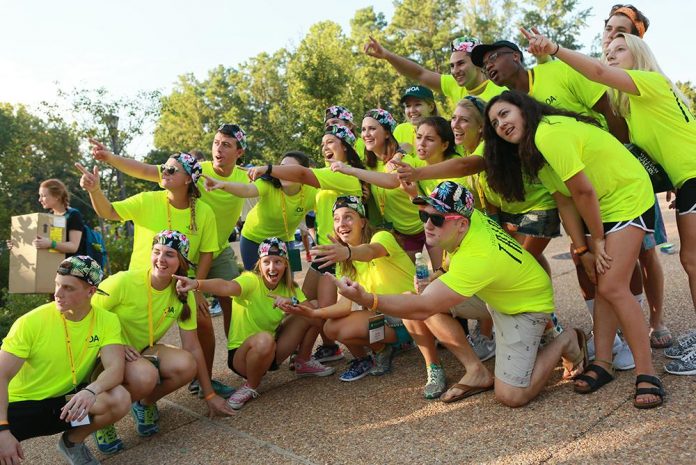Director of First Year Experience Lauren Garrett and Director of Residence Life Maggie Evans introduced the Sophomore Year Experience initiative to the College of William and Mary’s Board of Visitors Thursday, Feb. 7. Beginning this fall, the pilot initiative will provide additional academic and residential support for students transitioning into their second year.
The Sophomore Year Experience includes both programming and housing elements. The new initiative is the first collaboration between the offices of First Year Experience and Residence Life under the title of Campus Living. The initiative incorporates a two-year, on-campus residency requirement starting with the class of 2023.
“Requiring second-year students to reside on-campus will help the university reinforce the support structures potentially lacking for this key population in transition,” Evans said in an email.
“Requiring second-year students to reside on-campus will help the university reinforce the support structures potentially lacking for this key population in transition,” Evans said in an email. “It will help us earlier identify students in need of assistance, thereby increasing their likelihood to degree attainment and overall satisfaction with their W&M experience.”
According to Evans, the housing requirement will have no impact on hall designation or housing availability, given that roughly 75 percent of sophomores have lived on campus alongside upperclassmen and graduate students for the past six years.
Along with the housing requirement, the initiative will include “Forming Your Experience” programs, which will structure additional programming for second-year students. These events will focus on topics such as academic and career exploration, health and wellness and community engagement.
Both Garrett and Evans attributed the basis of the program to the “sophomore slump.” According to William and Mary Campus Living, students in their sophomore year experience unique transitional challenges, such as deciding on an academic major, struggling with the “disconnect between ability and outcome” and navigating less contact with faculty due to bigger class sizes.
“You hear from students that they still do not have a purpose,” Garrett said. “They’ve lost the connection from their Residence Life community, and while they may still have a relationship with their Resident Assistant or their Orientation Aide, they just are not making the connections in the way that they used to because they are in an upper-level building, and they don’t know anybody else on their floor, or maybe they haven’t connected with a faculty member or even chosen their academic major.”
Garrett also found that the lack of programming offered to sophomores when returning to campus was worrisome, especially when compared to the environment provided throughout their freshman year.
“What we were finding is that students were leaving this very high-touch, high-communication environment in the spring and coming back to pretty much nothing in the fall,” Garrett said. “That’s very concerning when your work is about the student transition.”
“What we were finding is that students were leaving this very high-touch, high-communication environment in the spring and coming back to pretty much nothing in the fall,” Garrett said. “That’s very concerning when your work is about the student transition.”
As an Orientation Area Director and student, Kailyn Gyurickso ’20 has seen the “sophomore slump” manifest at the College and is enthusiastic about forthcoming initiatives.
“At the College, I have personally felt a lack of support for sophomores, so I’m really excited about the implementation for more support for sophomores,” Gyurickso said. “I think that creating a two-year residency requirement can be beneficial for that. I just hope that the school continues to work with students with financial or accessibility concerns with living on campus, but I’m really excited to see what this brings to the campus in general.”
In the cases of financial constraints or concerns over accessibility, Evans said that the two-year residency requirement will not hinder a student’s ability to petition for the termination of their housing contract.
“The two-year residency requirement will not change anything regarding the criteria for contract termination,” Evans said in an email. “It is rare that we are unable to meet accessibility needs on campus. The housing contract outlines criteria for release, and those conditions have not changed, so the two-year requirement will have no impact upon condition for release.”
Health & Wellness, the Reves Center for International Studies, Student Leadership Development and the Office of Community Engagement are a few of the campus offices that plan to collaborate on the Sophomore Year Experience.
While Garrett said that the initiative’s programming will be well-rounded, she also said that the academic and career components of “Forming Your Experience” will be the main focus for sophomores.
“Especially as you move through the curriculum and are being encouraged to figure out how all these pieces fit into a pathway that works for you, I think you will start to see those academic and career pieces become more relevant [to sophomores], and therefore it will seem to be the focus,” Garrett said. “But we will also be partnering with SLD, Office of Community Engagement and obviously Health & Wellness to think about other things
Alongside the academic programming, FYE plans to continue with events like “By the Dozen,” which facilitates a dinner between a faculty member — especially those with larger classes — and 12 of their students.
“Forming Your Experience” will also continue FYE’s “Sophomore Swag and Sweets” event, which offers coffee, desserts and presents to sophomores on the first day of classes, welcoming them back to campus.
Gyurickso is supportive of the initiative’s plans for the sophomore class and is especially looking forward to events like “Sophomore Swag and Sweets” and “By the Dozen.”
“From my personal view, I think that the school benefits a lot from programming,” Gyurickso said. “… By helping to bring the sophomore class together, it will kind of ride the wave off of freshman year and create more supportive bonds throughout the class as they continue through to their junior and senior year, which could be just as difficult as sophomore year.”

